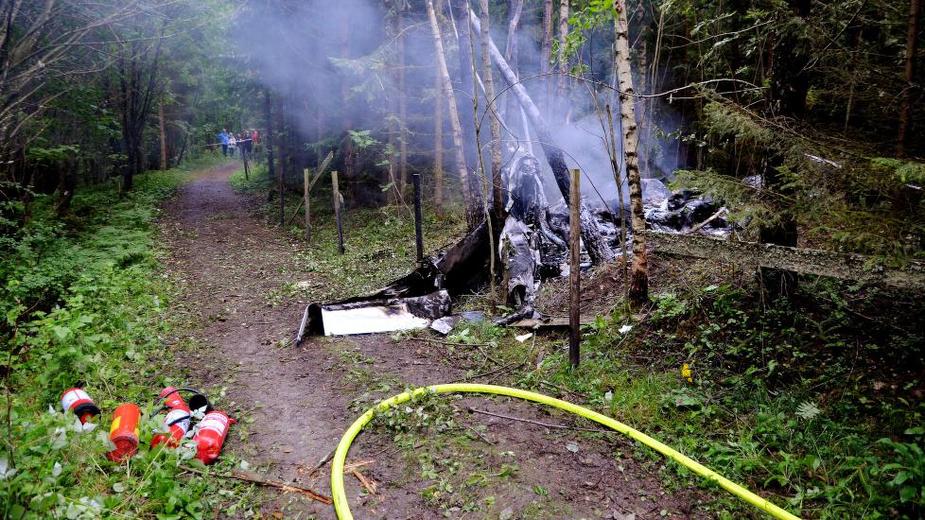It’s been suggested here that a carbon fibre aircraft will burn down totally in a fire.
I have no idea if this is true but in any case is carbon fibre better or worse in this respect than normal fibreglass?
AFAIK most “composite” production aircraft are made of ordinary fibreglass anyway. One sees some totally carbon designs being exhibited at Friedrichshafen but what are e.g. an SR22 / DA40/42 made of?
Peter wrote:
I have no idea if this is true but in any case is carbon fibre better or worse in this respect than normal fibreglass?
It depends on the resin used. Early aircraft seem to have used Epoxy resins, which are a fire hazard. Nowadays, it seems that phenolic resins are used that can cope with heat much better. They start to decompose above 500°C.
The carbon fiber itself seems to need 900°C and an oxygen rich atmosphere to really start to burn. Also, carbon fibre layers seem to be used in fire brigade protective clothing
To conclude, whether fibreglass or carbon fibre is used is irrelevant, because the weakest link is the resin (roughly 40% resin, 60% fibre). And phenolic resins seem to cope with roughly the same temperature as aluminium, which is gone by 660°C as well.
It’s certainly true. There is nothing left when it starts burning.
This picture is from a terrible accident this summer at Hamar. It’s a WT-9 Dynamic. Both persons on board died in the fire.

The airplane normally looks like this:

I don’t know, carbon, wood, fibreglass, cloth, they all burn well compared with aluminium, and aluminium soaked with gasoline also burns well.
The SR22-G5 is mostly made from “fibreglass”, the main spar is made of carbon. The G1-G3 models had a fibreglass main spar which was about 50 kg heavier but can take the same loads as the carbon spar. In all SR22s the roll cage in the cabin structure is carbon fibre.
PS: the caption of Dynamic crash photo above implies that the fire responsible for the death of the occupants. I doubt that.
Flyer59 wrote:
the caption of Dynamic crash photo above implies that the fire responsible for the death of the occupants. I doubt that.
We will never know. I also doubt that the accident itself was survivable, but the fire wiped all doubts away.
@tomjnx: what you state could well make sense (as per usual  )
)
The one thing that is still unclear to me is the difference between “glass” and alu is the effect of heat: you state that from 660°C, alu “is gone” but I should think it just melts; whereas I understood that the resin will actually burn, contributing to the damage. But that will then also be different between various resins, I suppose.
Have you any idea about the difference in cost between standard resins and the more fire resistant, like phenol?
Just about anything will “burn” if there is a suitable oxidiser. In normal terms this means if the partial pressure of oxygen is high enough. I seem to recall that steel will burn at something like +1000C in an atmosphere of 100% oxygen. Aluminium will burn at well below that, but whether it will just “burn and disappear” at the normal oxygen atmosphere (21% oxygen) at any temperature I don’t know. Certainly there are reports of standard aluminium aircraft being reduced to piles of ash (not molten metal) if there was enough avgas around and the fire could burn without a disturbance.
I thought that solid carbon fibre spars produce a very rough ride, due to the rigidity. Is that not true?
I know its not related to aviation, but a few months ago I burnt my Carbon Fibre bike seat post to see the effects. ( in a fire stove temp around 400C)
Although, the Carbon fibre material didn’t disintegrate as you would expect in fire, but resin did completely dissolve in fire and the fibre’s collapsed fully making it a raw fibre sheet again.
So I suspect the type of resin used here is the key to fire resistance.
Jan_Olieslagers wrote:
you state that from 660°C, alu “is gone” but I should think it just melts
I was vague because the burning of aluminium is complex. It melts at 660°C, then reacts with oxygen, and that is exothermal as well, i.e. it creates a lot of additional heat (4 Al + 3 O2 → 2 Al2O3; releases 3352kJ/mol)
And aluminium is very reactive, for example mixing it with the iron (III) oxide gives you the famous thermite powder
But you are correct, decomposing phenolic resins gives you hydrocarbons that burn as well.
tomjnx wrote:
But you are correct, decomposing phenolic resins gives you hydrocarbons that burn as well.
Not to mention the fumes which also will kill you, faster than the heat in many cases. Metal fire is extremely nasty. When working in the North Sea one has to have this survival course. One item is about fire. They demonstrated burning steel. It requires extreme heat to start, far above any normal fire, but it could happen on an oil rig, chemical plants and so on. Once started it is very difficult to stop. It burns in water because the heat breaks apart the water molecules. The only way to stop it is bury the steel in sand trying to stop the supply of oxygen.